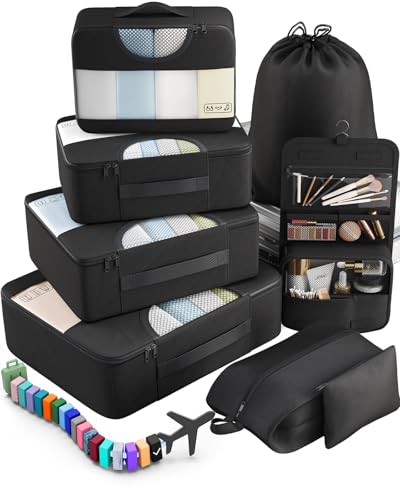In Nairobi, they use Type G power plugs and outlets. The voltage is 240V, and the frequency is 50Hz.
So, you’ll need a travel adapter in Nairobi. Their plugs and outlets are different from the Type A and B ones we use back in the States.
Quick Overview of the Plugs in Nairobi:
- Plug type in Nairobi: G
- Standard voltage: 240V
- Frequency: 50Hz
- Need a travel adapter? Yes, you do need a travel adapter
- Need a voltage converter? Likely needed for a few devices
- Recommended plug adapter: One Beat Travel Plug Adapter
All information is gathered from official sources like local power authorities, IEC standards, and firsthand traveler experiences to ensure accuracy.
The Only Travel Adapter You’ll Need in Nairobi
Need a reliable travel adapter for Nairobi? We don’t sell them, but we’ve researched the best option based on voltage, safety, and plug types. Here’s what we recommend:
Recommended Travel Plug Adapter
by 2,000+ travelers on Amazon
Already on the road or just arrived and forgot your power adapter? It happens. Luckily, airports and local shops often carry basic ones. Still, packing one ahead of time saves you the hassle and guarantees you’ve got one that works for your needs.
Nairobi is often combined with trips to Tanzania, Uganda, or Ethiopia. Plug types can differ, so be sure to check before you go.
Power Outlets in Nairobi
In Nairobi, they use Type G power plugs and outlets.
Type G

Type G outlets have three rectangular prongs in a triangular layout and built-in fuses. Other plug types won’t fit without an adapter.
Do You Need a Voltage Converter?
A voltage converter is likely needed in Nairobi because your device must match the country’s voltage. The U.S. runs on 120V, but Nairobi uses a different voltage, so a converter is necessary.
Before plugging in your devices abroad, always confirm the power rating on the label. If it lists “100-240V, 50/60 Hz”, your device is designed for worldwide use and won’t require a converter. Many modern gadgets, including laptops, tablets, and cameras, are built this way.

Which Travel Devices May Need a Converter?
Want peace of mind while traveling? These top-rated voltage converters are a safe bet.
| Device | Need Converter? | Notes |
|---|---|---|
| Phone | ❌ No (usually) | Most modern phone chargers are dual voltage (100–240V) |
| Laptop | ❌ No (usually) | Check the power brick label for 100–240V |
| Hairdryer | ✅ Yes (often) | High wattage; many models are not dual voltage |
| Electric toothbrush | ⚠️ Check voltage | Some models are 110V only |
| Camera / DSLR | ❌ No (usually) | Most chargers are dual voltage |
| Power bank | ❌ No | Charges via USB, adapter is enough |
| Electric shaver / trimmer | ⚠️ Check voltage | Older or cheaper models may not support 230V |
| Tablet / iPad | ❌ No | All models are dual voltage |
| Portable fan | ✅ Yes (sometimes) | Many models are not compatible with 230V |
| Game console | ⚠️ Check voltage | Newer consoles like PS5 and Xbox are often dual voltage — check to be sure |
| Bluetooth speaker | ❌ No (usually) | Charges via USB |
| E-reader (Kindle, etc.) | ❌ No | USB charging only, no converter needed |
Top Travel Essentials to Pack
Experienced travelers know: the right gear makes a difference. These handy items can save time and frustration.
Digital Luggage Scale
Packing Cubes
Power Bank
More About Nairobi
Nairobi sits at about 5,500 feet elevation in Kenya’s highlands and is affectionately known as “The Green City in the Sun.” Despite its size—over 4 million residents—it remains compact enough to explore neighborhoods, markets, and parks in a few days. It’s the only capital city with an established national park within city limits, where you might spot giraffes or lions framed by high-rises.
The city’s cultural pulse is strong—from the Giraffe Centre, where you can hand-feed Rothschild giraffes, to the Sheldrick Wildlife Trust and Bomas of Kenya cultural village showcasing tribal dances and crafts. Dining is exciting too: try nyama choma (grilled meat) with locals at roadside joints, or modern African fusion in hotspots like Beit é Selam and the Nairobi Street Kitchen. Galleries, local shops, and forest hikes nearby bring local art and nature together seamlessly.
Nairobi is also the launchpad for safari trips—famous parks like Masai Mara, Amboseli, Hell’s Gate, and Mount Longonot are under a few hours’ drive. Tourism numbers hit a record 2.39 million arrivals in 2024, up nearly 15% over the previous year—a trend that signals growing curiosity about Kenya’s diversity in wildlife and culture. The city feels layered: business walkways, street bazaars, green spaces, and wildlife, all in one accelerating package.
Nairobi uses the same plugs and outlets as the rest of Kenya.




